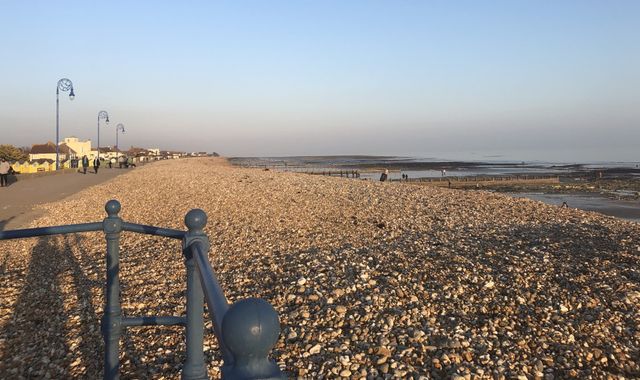Coronavirus: Why has the North been hit harder now?
Written by News on 14/10/2020
The recent spike in coronavirus infections has been higher in the North of England than in other areas, with scientists pointing towards the lockdown being lifted too early as part of a complex mix of reasons why.

Nearly six in every 10 COVID-19 cases reported in England at the beginning of October (5 to 11 October) were in the North.
Cases have risen everywhere in the country, but the increase has been particularly sharp in the North since the beginning of September.
Northern lockdown “lifted too early”
One of the main reasons for the rise in the North is that the lockdown from March to July was lifted too early, several scientists and northern mayors have said.
Professor Jonathan Van-Tam, England’s deputy chief medical officer, said: “The epidemic this time has clearly picked up pace in the North of England earlier than it did in the first wave.
“And that almost certainly relates to the fact the disease levels in the North, and certainly in the North West, never dropped as far in the summer as they did in the South.”
Infection rates in April were highest in the northern regions and never dropped to the same levels as London, although some local authorities did see similar reductions.
Dr Andrew Preston, an infectious diseases microbiologist at the University of Bath, added: “The North probably had higher residual cases when lockdown was eased so there was a higher number to bounce back from.
“Even if cases are growing exponentially, it takes a while to get numbers that are noteworthy, but if you’re starting on a high number then that’s going to increase quickly.”
More deprived areas in the North
Data shows there have been more cases in deprived areas, and that the North has a higher proportion of poorer areas.
Liverpool, Manchester, Birmingham, Rochdale, and Blackburn with Darwen have all had COVID-19 outbreaks, and are all in the top 20 most deprived English boroughs.
A study by SAGE, the body of scientists advising the government on COVID-19, said the risk of infection in more deprived areas comes from “the fact that low-income workers are less likely to work from home and are more likely to be frontline or key workers”.
It added: “They also face more pressure to continue working when unwell (as recent outbreaks in food processing units illustrate) and may need to use public or shared transport.”
Housing in the North
Housing conditions in deprived areas also play a part in rising cases, as they are usually high density with poor environmental conditions and ventilation, the SAGE report says.
Although data on household transmission is very limited, experts found overcrowding in a home increases the risk of transmission due to limited space and more shared surfaces and rooms.
Outside London, places with high levels of overcrowded housing include Manchester, Oldham, Bradford and Blackburn, which also have some of the highest current infection rates.
:: Subscribe to the Daily podcast on Apple Podcasts, Google Podcasts, Spotify, Spreaker
An overcrowded household is defined as having fewer bedrooms than it needs to avoid undesirable sharing, based on the age, sex and relationship of household members – with adults of different sexes not in a couple sharing considered “undesirable”.
Multi-generational households, homes with many people, households mixing vulnerable people with frontline and key workers, and those in low-paid work are also at a higher risk of transmission, the report said.
Within those mixed households, “people, usually women or paid domestic workers who carry out the majority of exposing work are most at risk and broader social connections”, it adds.
The proportion of people living in overcrowded households is much higher in non-white groups.
Multi-generational adult households are comprised of mainly adult children with their parents, but are also common with “working class, Hindu, Muslim, Sikh, Orthodox Jewish, BME (black and minority ethnic) and African-Caribbean communities”, the SAGE report said.
Within those groups, there is a “more collective and extensive concept of family and the need for mutual support for childcare, resources and domestic work”.
The report added: “This makes it likely that households will have a greater density of connection in flows of care between them.”
Cases spreading from young to older people
Another group living in close quarters are students, especially in halls of residence.
Cases in the North were already rising and there have now been several coronavirus outbreaks among students after they returned to universities all over the country in September.
But, Dr Preston said the mass migration of students is only part of the reason why cases have risen in the North.
“Students will add to the rise – and you can see some of the cities most affected are massive university cities,” he said.
“But, I don’t think there’s one factor that explains this – here in Bath we’ve had some student cases but overall the city’s cases are quite low.”
Infection rates in the North increased across all age groups in September, but the highest rise was in the youngest groups.
That is now spreading to older groups, in line with what Dr Adam Kucharski, infectious disease epidemiologist at the London School of Hygiene and Tropical Medicine told Sky News at the beginning of September.
“We have such a dense social structure, you’re only two steps away from another age group,” he said.
“We’ve got this situation where younger people are transmitting it to older groups, we’re seeing it in the US and now France, with more older people being seen in the ICU.”
That has now happened in the UK, and especially in the North, but the north-south divide in case rises has several more factors.
Hospital admissions surge in the North
A surge in coronavirus cases in the North has also meant there is now a rise in people needing hospital care.
Two-thirds of all of England’s admissions recorded during the week ending 10 October were in the North.
Since the beginning of September, there has been a sharp rise in those requiring hospital treatment.
In the North East and Yorkshire, 12 times more people were admitted to hospital with COVID-19 than the same time a month before, increasing from 76 between 31 August and 6 September, to 1,214 in the week up to 10 October.
Admissions in the North West were eight times higher, rising from 147 to 1,214.
Both regions have more than a quarter of the COVID-19 patients they treated during the worst period in the spring.
If admissions reach more than 25% of recorded cases, this is considered high, according to the European Centre for Disease Prevention and Control (ECDC).
At the beginning of October, at least eight hospital trusts in England were above that threshold – with seven of those in the North.
The proportion of people on ventilators is also rising in the North West, North East and Yorkshire, with all of them reaching levels of more than 25% of people in hospital needing help to breathe.
More than half of patients on ventilators in England are in the North – eight times more at the beginning of October than the month before.
It is not just the North where respiratory assistance is rising, with the Midlands also seeing an increase.
Professor Chris Whitty, the chief medical officer, warned northern MPs last week that the numbers of people on ventilators was going up “alarmingly fast” and if this continued at the current pace it would put the NHS under “significant strain”.
He added on Monday night that even the toughest measures would probably not contain the spread of the virus in the worst-hit areas, and said local authorities would need to add extra restrictions.
(c) Sky News 2020: Coronavirus: Why has the North been hit harder now?






